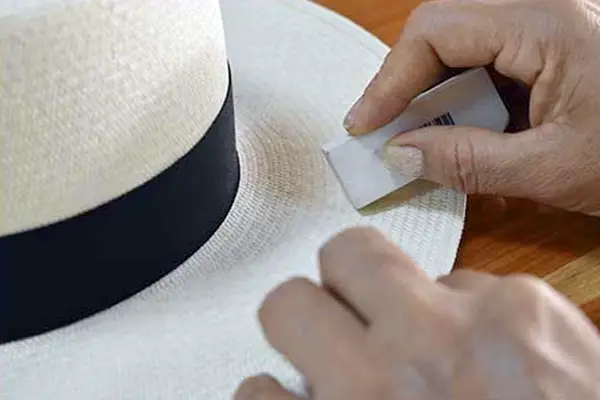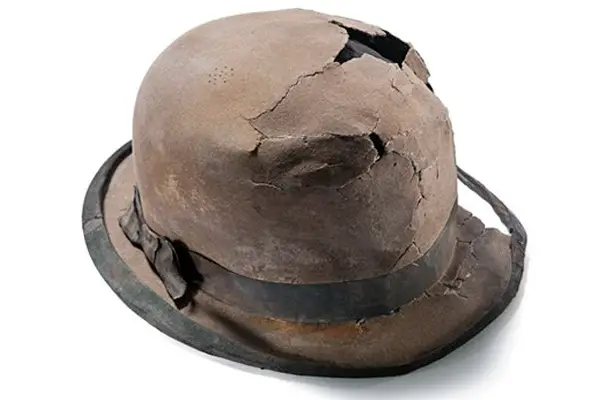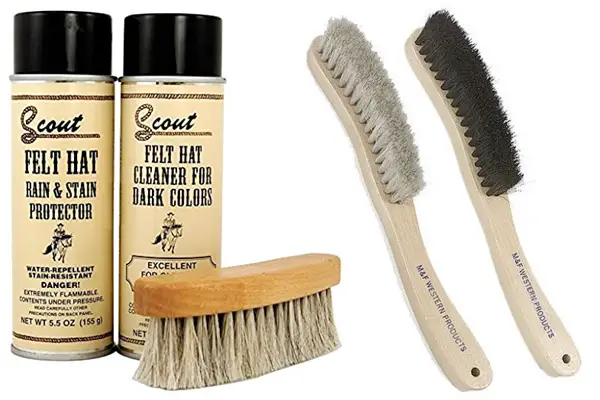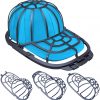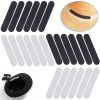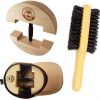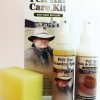Looking after your hat
Hats often improve with age, but they need caring for to stop them looking battered.
The secret of extended hat life is a regime of cleaning, storage and maintenance.
Basics
Some basic good hat care behaviour you should read and learn:
- Only touch your hat with clean dry hands.
- When you don or doff your hat or need to adjust it, handle the hat by the front and back of the brim to avoid losing the shape of the crown or getting it dirty.
- Place your hat upside down on its crown on a clean surface.
- Dented felt hats can be fixed using steam.
- Flexing your hat will weaken the body of the crown and brim and make it difficult to shape.
- Avoid touching the crown to avoid getting finger oil on it.
- Don’t place your hat on its brim – you’ll lose its curve particularly when it’s damp or wet.
- A styrofoam or hat head is ideal for short term storage. You can also make a tube or set on covered large coffee can or similar.
- Keeps hats out of direct sunlight (eg car parcel shelves, windows etc) where possible to avoid fading colours or shrinkage.
- Transport your hat in a hat box with handle when travelling if possible.
- If your hat needs a clean then take it to a professional cleaner or use a professional hat care kit.
Wet Hats
Felt hats can get wet but not ideally for long periods. If your hat gets wet, pat and shake off the excess water.
For fur felt turn down the leather sweatband and stand the hat on the sweatband so it can dry naturally. Never sit a hat on its brim when wet as this can cause it to lose its shape.
Never put a hat away wet, this will cause mildew and ruin your hat.
Wet hat dos and don’ts
- Always dry your hat out if it gets wet
- Don’t put your hat away wet
- Don’t dry your hat out on its brim
Waterproofing Hats
Consider using a rain protector to avoid getting your hat wet. Some hats made of canvas, felt or straw can have applications of Scotchguard to help make the hats waterproof.
Rain protector is worth thinking about for hats made of canvas, felt or straw. Scotchguard can be applied to waterproof you hat although some manufacturers do not recommend this and prefer silicone based waterproofer.
Heat
Do not expose your hat to direct heat from stoves, radiators, lamps and car windows. The combination of heat and perspiration will shrink the sweatband. Never leave your hat in a hot car or sun as the heat may cause it to lose shape and the sweatband, cotton, wool or leather, could shrink or distort.
Heat dos and don’ts
- Avoid heat from stoves, radiators, lamps and car windows
- Never leave your hat in a car on a hot day
- Never leave your hat in direct sunlight
Sweat
To keep perspiration and hair dressing from penetrating to the outside of the straw, occasionally turn down the sweatband so it can dry between wearings.
Occasionally flip down the interior sweatband air with increased frequency if you sweat a lot.
Hat Removal
To put on or remove your hat, hold the brim in front and back; handle the crown as little as possible. Avoid handling your hat by the pinch, it will eventually damage it.
Hat Covers
Expensive hats need protection from the rain when you don’t have an umbrella. Hat Covers can be transparent which are good for special occasions so you can still see the hat. A useful cover should be small enough to fit in your handbag or pocket.

